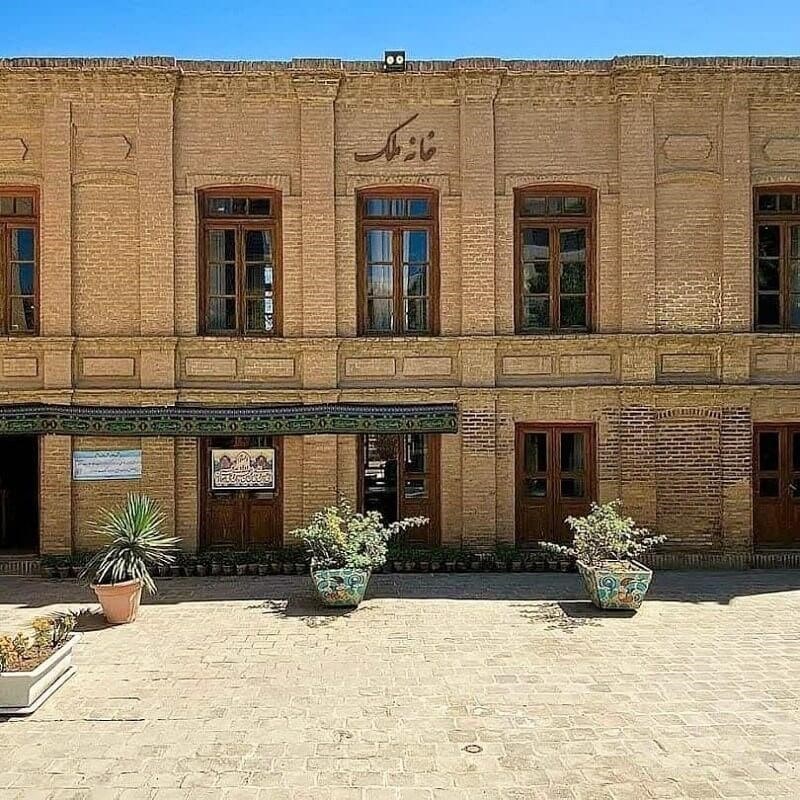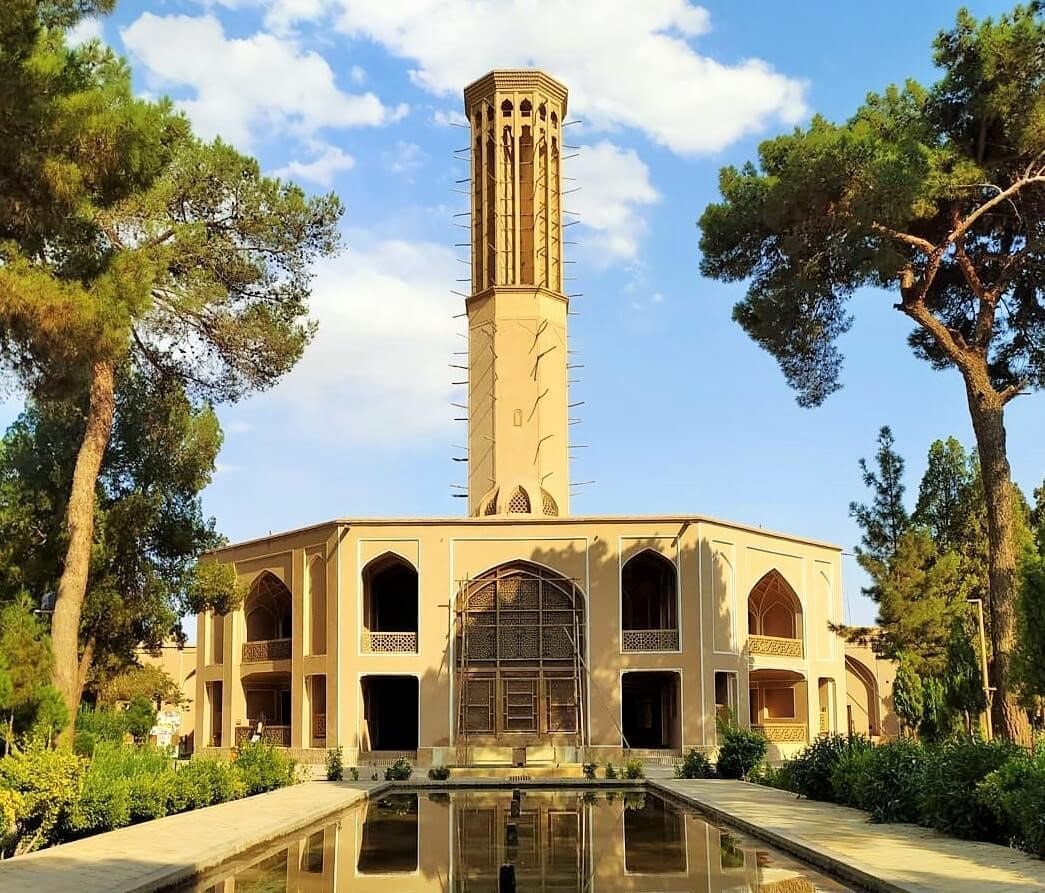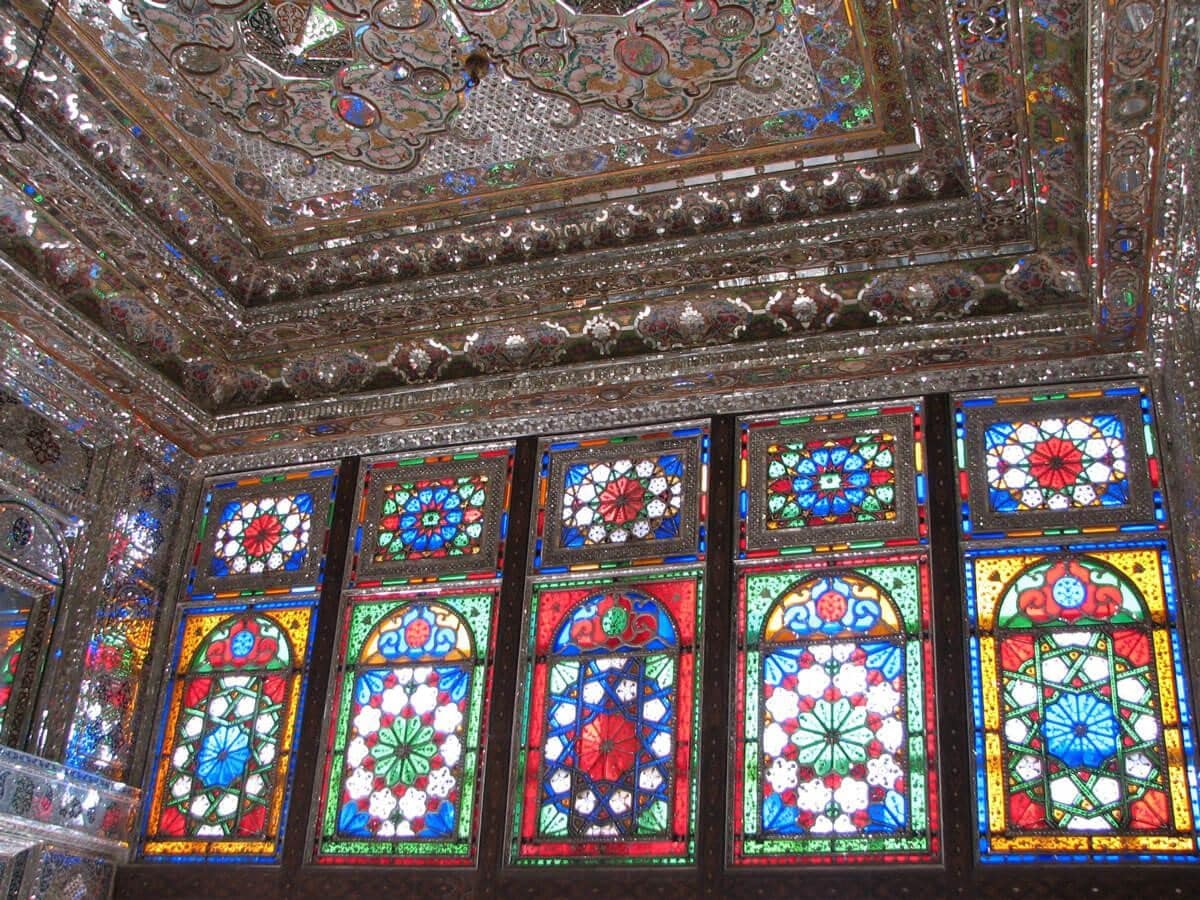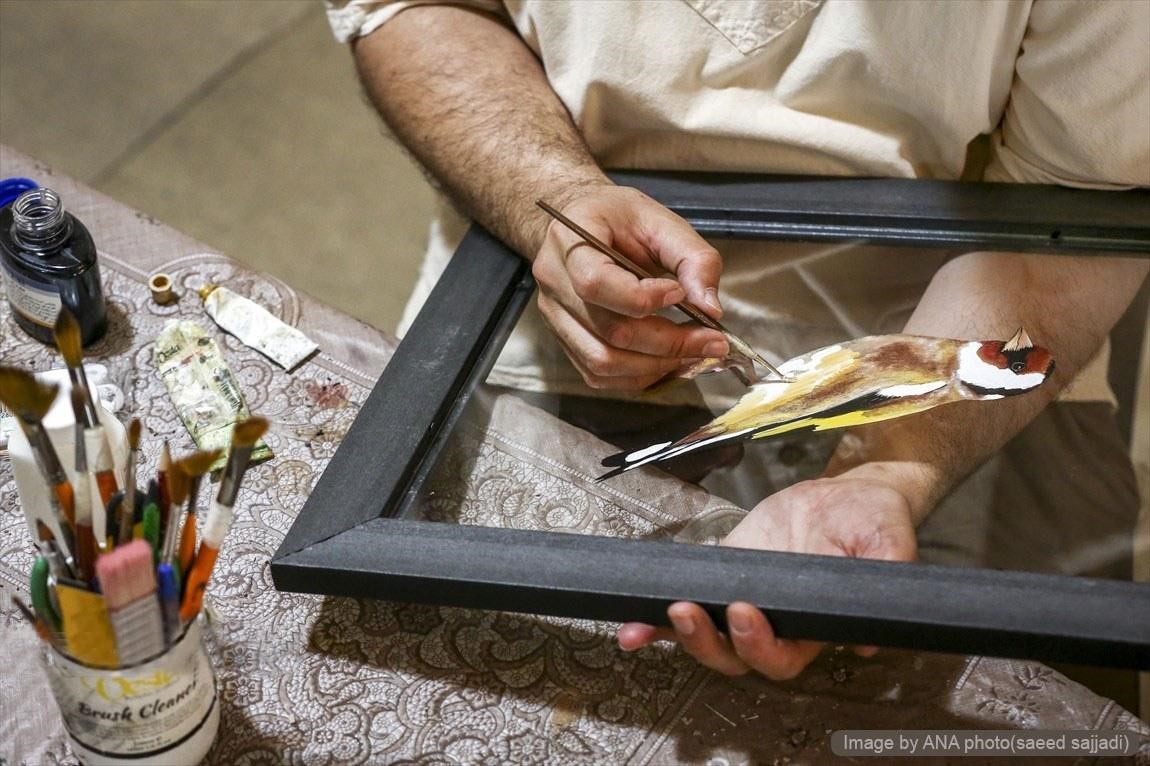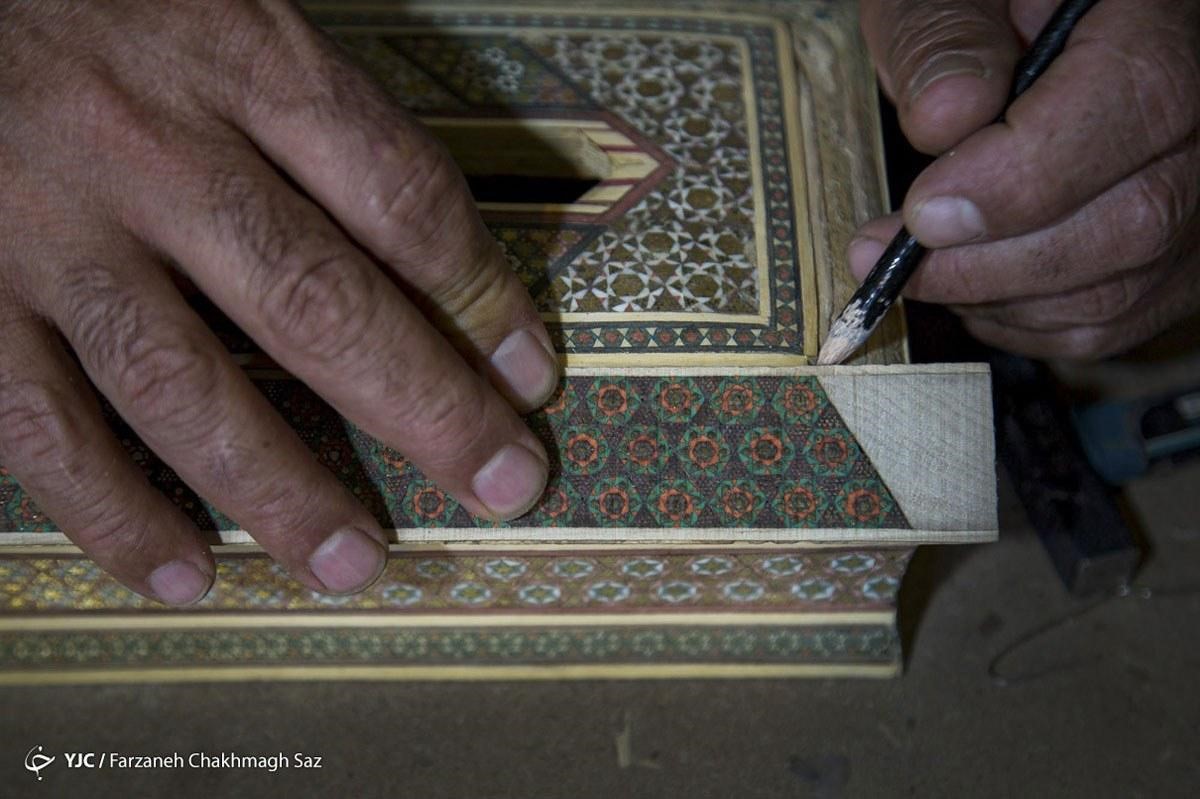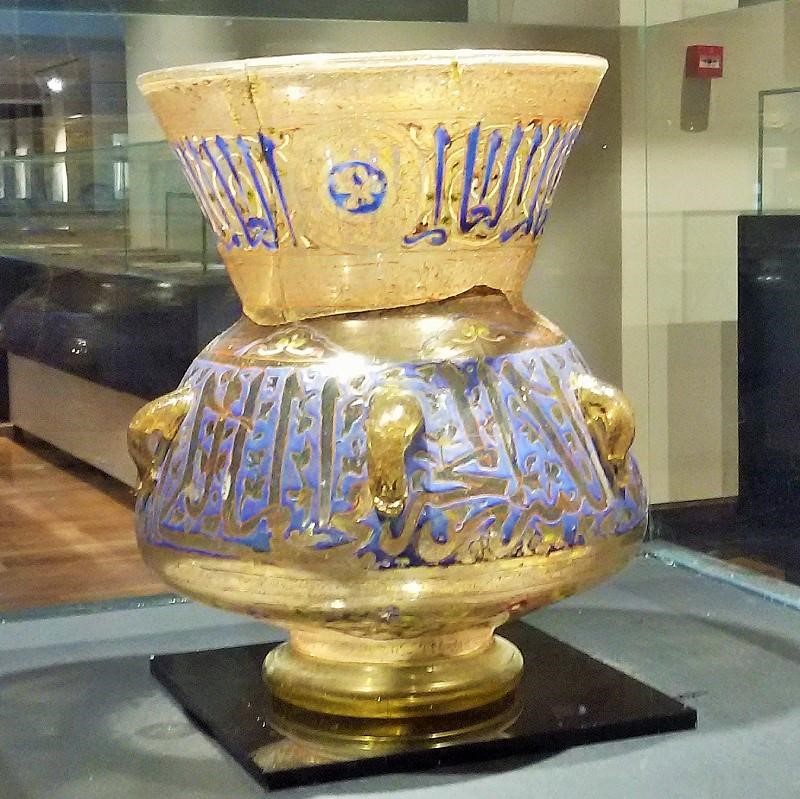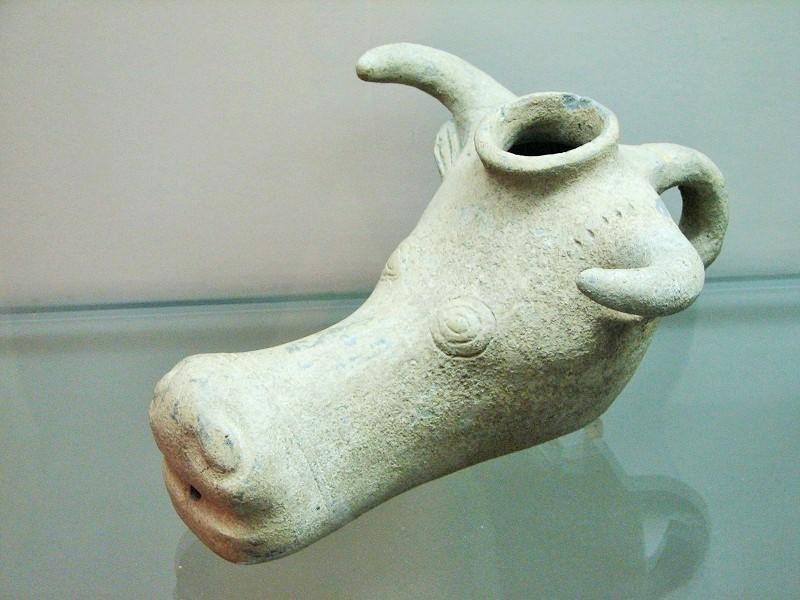
Pottery is a handicraft created through imagination using the most common raw materials abundantly available in nature. After the hunter-gatherer period, when humans started to produce food, the need to store food led them to make containers in the form of various jars. This is the supposed start of pottery making history, as one of the oldest of Iranian handicrafts.
The oldest pottery found in Iran dates back to around 8650 to 7000 BCE, which was discovered in the Neolithic layers of Bistoon Hunter’s Cave and Hotu and Kamarband Caves (Belt Caves). The first pottery artifacts were sun-dried and had no decorative engravings. Later, the pottery was cooked in fireplaces.
After that, 200 x 200 cm jars were made in the open, and cooked in furnaces heated by burning the circular heap of dried animal feces that covered the furnace. The result of this process was baked, half-baked, and carbonized pottery (smoked pottery.
These rudimentary furnaces were gradually upgraded into more efficient furnaces. With advanced clay shaping techniques, at some point, the air was completely removed from the clay.
Early Patterns in Iranian Pottery Making History
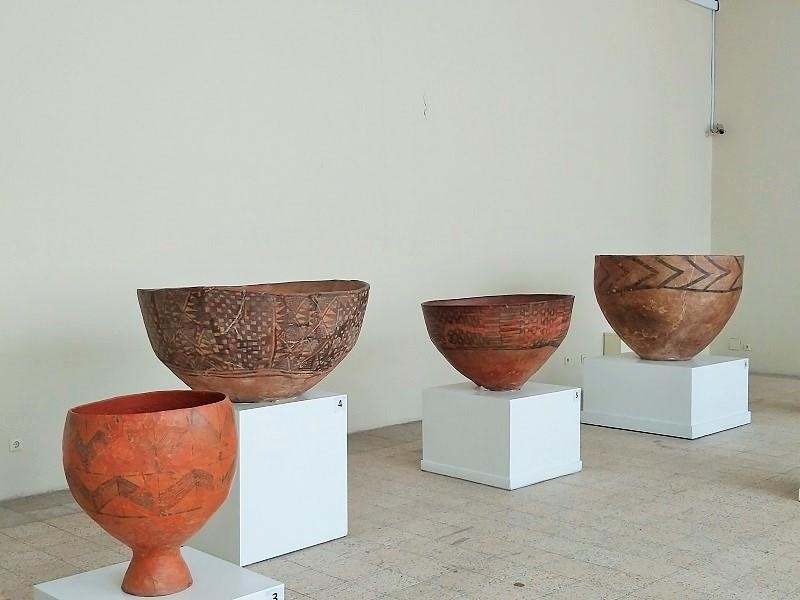
The first patterns that were depicted on pottery artifacts were simple geometric shapes. Later, animal figures and plants were depicted on the pottery. In general, the pottery was made in buff, red, and gray colors and the patterns were often red or black.
In the history of pottery making, the first potters were most likely women who cooked at the fireplaces in their homes. They made various kitchen items such as large pots and plates for food storage and distribution, as well as decorative and ritual items such as statues for decoration or ritual ceremonies. Such pottery artifacts from various historical periods have been discovered in different archeological sites across Iran. Each period exhibits unique pottery characteristics.
In other words, pottery methods, styles, and techniques led to the creation of amazing works of art.
Styles of Ancient Iranian Pottery
In general, the ancient pottery in Iran can be divided into the following styles:
- Long foot bowls: they can be considered fruit bowls or pastry bowls. Their shape resembles bridge bowls placed on an inverted horn.
- Stemmed cups: They were used to serve food or drinks. Their shape is similar to long-foot bowls. For example, these cups are like bowls or plates placed on one or three bases. Sometimes the bases are shaped like animal hooves.
- Tripods: Their shape is similar to the previous ones. It is a cup, a pan, a plate, etc., which are placed on bases in the shape of human and animal legs.
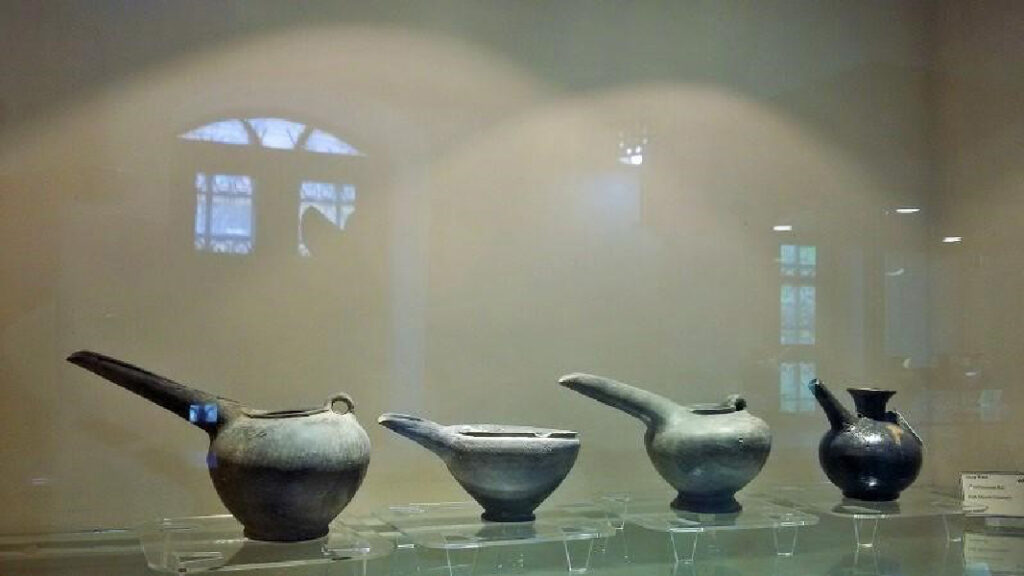
- Stylized teapots: They are in the shape of teapots whose tops are beautifully stylized. Some of them also have a small handle so that they can be picked up with one finger. In some cases, the spout of the teapot is made to look like a bird’s beak.
- Button-based chalice: These vessels were used for ceremonies in pottery making history in Iran, and are carefully and beautifully handcrafted and decorated. They are relatively tall liquid cups with button-like bases attached to the stem.
- Traveler jars: the beauty of the shapes of these containers is exceptional. Most of them have two connected rims. One at the top of the container and the other below the previous rim and on the larger and arched part of the bottom of the jar.
- Jugs with an angel-shaped body: these jugs have a delicate body, a narrow shape, and a delicately stylized surface. These jugs can be considered among ritual pottery, some of which were offered as gifts to the dead. Some others were given to infertile women to drink from so that they could have children. (The reason for such a conclusion is the nipple-shaped prominent points on them.)
- Spherical jars: these vessels have a short neck, a small handle, and a spherical shape. Some others are more oval or parabola-shaped. These jars are made of very thin layers of clay. The thickness of some of them is 3 mm.
- Nursing jar: This spouted nursing pottery artifact was spherical or parabola-shaped, with handles. Sometimes, their handles were small spouts that extended to the bottom of the container. In addition, these nursing jars were also given as gifts to dead children.
- Goat head bowls: these bowls with their unique shapes were reserved for special ceremonies and rituals. To decorate the handles of such cups, they were made in the shape of a goat’s head or similar animal. The bowls were filled with a special liquid that was to be drunk in special rituals such as blessing, healing, witchcraft, anesthesia, and other purposes.
- Measuring cups: Some of these containers have small handles and some of them have small bases. They can be found in abundance in various historical hills.
- Pottery pipkins: the shape of these containers is spherical or parabolic, and often has a pair of symmetrical handles installed on both sides of their necks. These dishes have edges and are built to be placed over a fire.
- Basket-handled teapots: These earthenware teapots have handles in the top part, and are some of the most ancient pottery designs that have been common in Iran. These teapots are used to hold liquids. The existence of the spout of these teapots helped to easily transfer the liquid inside into another container.
- Kohl containers: There are many types of this traditional Iranian pottery. Usually, three raised base-like parts are formed on the lower section. There are small holes in their lower part that extend to the bottom of the container. A piece of wood was used to remove the kohl from the container and make up the eyes. Most of the Kohl containers in the history of pottery in Iran have been found in women’s graves.
- Chalice: If these pottery chalices have stems, the stems are short and their bases are wide. Most of them have small knops near the bottom.
- Jars: These earthenware are large and bulky containers for storing food and liquids. Jars are usually tall and without handles.
- Cups: If these pottery have bases, their bases are short and beautifully decorated. The clay used in their construction is fine-grained and hard and is generally polished. These containers are not so different from the cups from which we drink tea or coffee today.
- Glasses: These earthenware are the usual containers for storing liquids that are used for drinking and are very similar to the glasses that we normally use today to drink tea, water, etc.
- Lavak: In everyday use, these earthenware pots were large containers to place smaller containers inside – something like a box or shelf.
Ever since the pottery wheel was invented (from 5000 to 4000 BCE), many of the above pottery types were made using it. But before that time, mankind had to build everything with rudimentary techniques.
Decorating the earthenware with different designs indicates the inclination of ancient Iranians to express feelings, needs, wishes, admiration, etc. in the form of art.
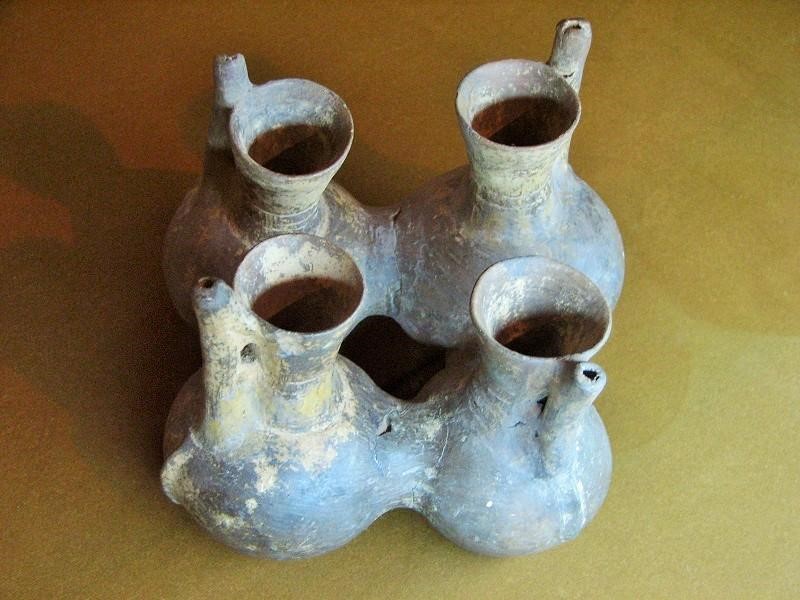
In the Iranian history of pottery, our ancestors started making grayware pottery or black pottery about 3000 years ago. They could boil water inside this pottery to cook beans and other food.
In addition to the uses of grayware pottery, it should be acknowledged that decorating them also required techniques that were different from the techniques used in buffware and redware pottery. Therefore, either reliefs were used to adorn their surface or new forms were created. In addition, bricks, inscriptions, etc. were also made of clay using the same techniques.
Ancient Pottery Glazing Techniques
During the 2nd millennium BCE, the pottery started to be glazed in a pale turquoise color in Elam. Glass-making and glazing techniques were transferred from the Elamites to the Assyrians. Glazed bricks in blue, green, white, or a combination of them were found in Tchoghazanbil Temple. Later, pottery dishware was also glazed with the same technologies.
After that, during the different dynasties that ruled Iran, pottery was made and glazed. Glazed bricks were used to decorate the walls of Achaemenid palaces. The use of rhytons was very popular during the Parthian rule in Iran. Rhytons were containers that resembled animals (sheep, goats, etc.) and were used to pour liquids into other containers, not to drink directly from them.
During that period, large glazed containers such as coffins or jars that were used as coffins and tallow burners were crafted.
During the Sassanid era, glazing techniques underwent a dramatic evolution and were later used in high-quality post-Islamic vessels.
Pottery Making History in Iran After Islam
After the Sassanids, pottery works were inspired by Quranic concepts. The decorative techniques of gilding and enamel were added to the previous techniques. The traditions inherited from the previous dynasties (Achaemenid, Parthian, and Sassanid) were used in the creation of various legendary and mythological creatures as models for the artists of the early post-Islamic period.
During the Samanid period, Iranians started to revive ancient traditions in pottery, as in many artistic fields, after centuries of prohibition by Arabs. They started the work of decorating pottery and ceramics with beautiful and reverent calligraphic writings that sought blessings for the users of the objects. Meanwhile, scenes from old epics such as Khosrow and Shirin, Bijan and Manijeh, etc. were depicted on the dishes.
Seljuk Pottery Making History
During the Seljuk period, in addition to the previous techniques, unglazed molded pottery was created. In addition, they also used animal motifs and calligraphy to decorate the Seljuk pottery artifacts.
Ilkhanid Pottery Making History
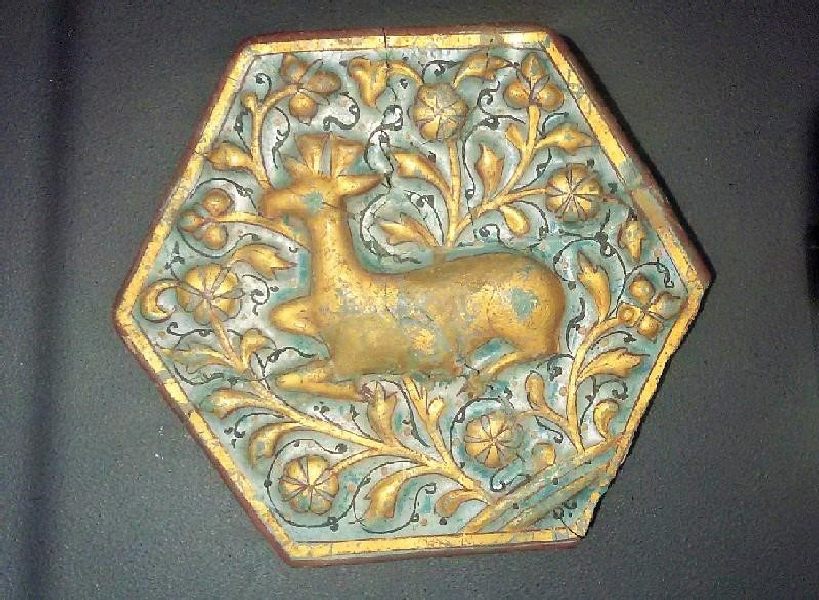
After the Mongol invasion of Persia, a new style was introduced to decorate pottery, which consisted of painting under the glaze layer in black and blue colors. Artists also started to create raised ornament elements which became a very common style.
Timurid Pottery Making History
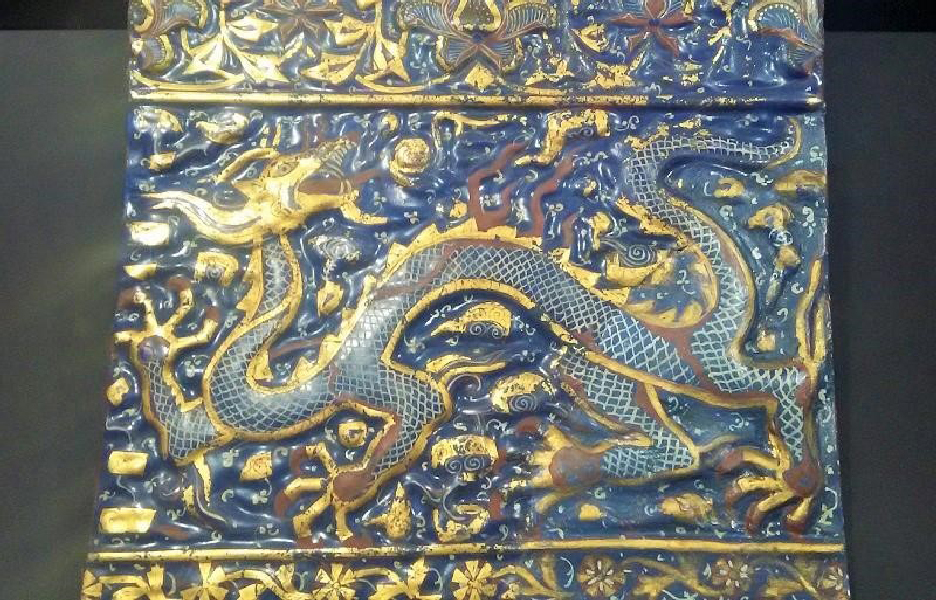
With the rule of the Timurids in Iran, the influence of Chinese art in pottery continued. For example, volute designs under green or blue glaze became common. Artists continued to produce glazed tiles on a larger scale. The history of pottery at this point witnessed the introduction of Chinese motifs such as dragons into Iranian art.
Safavid Pottery Making History
During the Safavid period, unique ceramics were handcrafted, which were decorated with miniature designs, carpet patterns, and textile patterns. The imitation of Chinese porcelain craft resulted in the production of higher quality materials and better products than Chinese-made items. In addition, all kinds of artistic pottery artifacts were also made. Tilework art flourished and mosques and similar buildings were decorated with this art on a large scale.
Impact of Modern Technology on Pottery Making
After the Safavid era, pottery-making as a handicraft began to decline due to trade with Europe and the import of large quantities of ceramics and porcelain. Today, industrialized methods of producing pottery, ceramic, and porcelain dishware have emerged and science has helped the development of technical knowledge in this field. But this is no longer considered handicraft art.
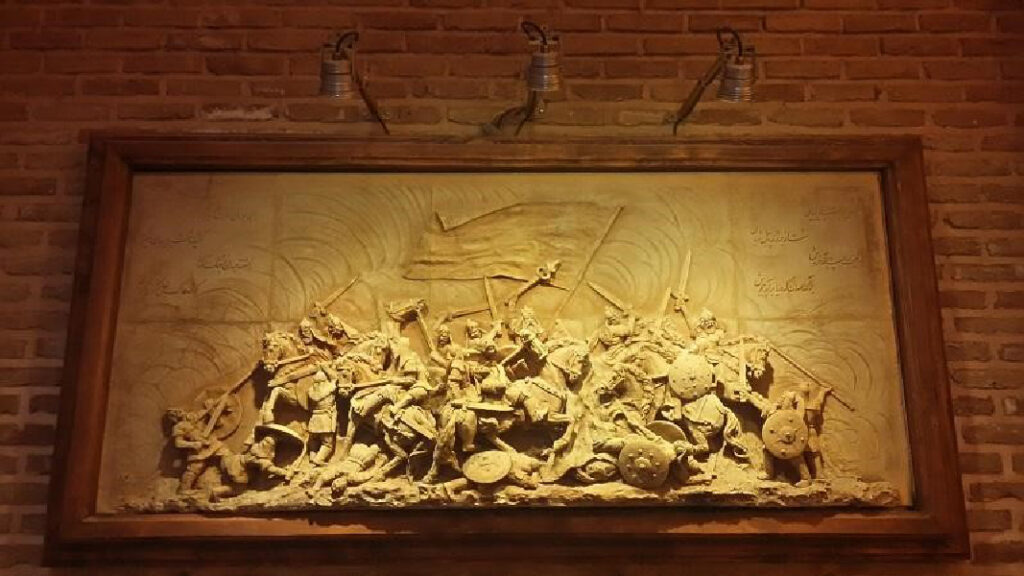
Fortunately, there are still traditional pottery workshops in Iran and are welcomed by the public interested in this traditional handicraft art.






